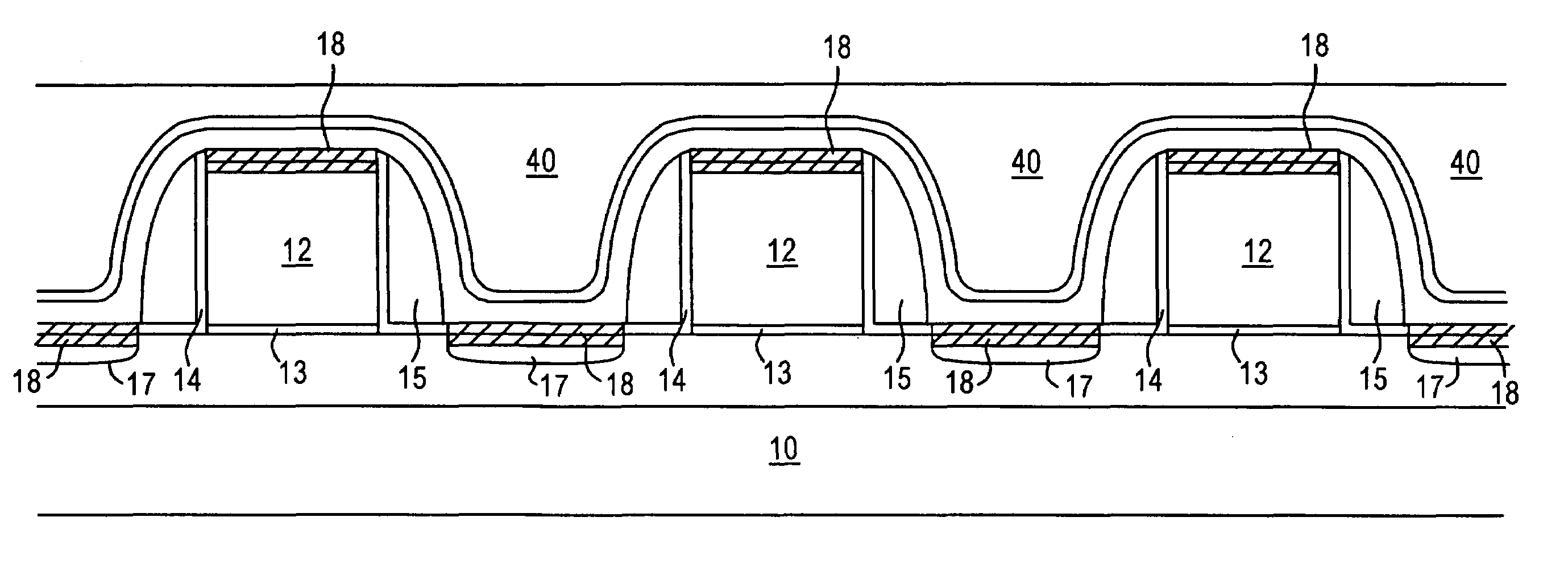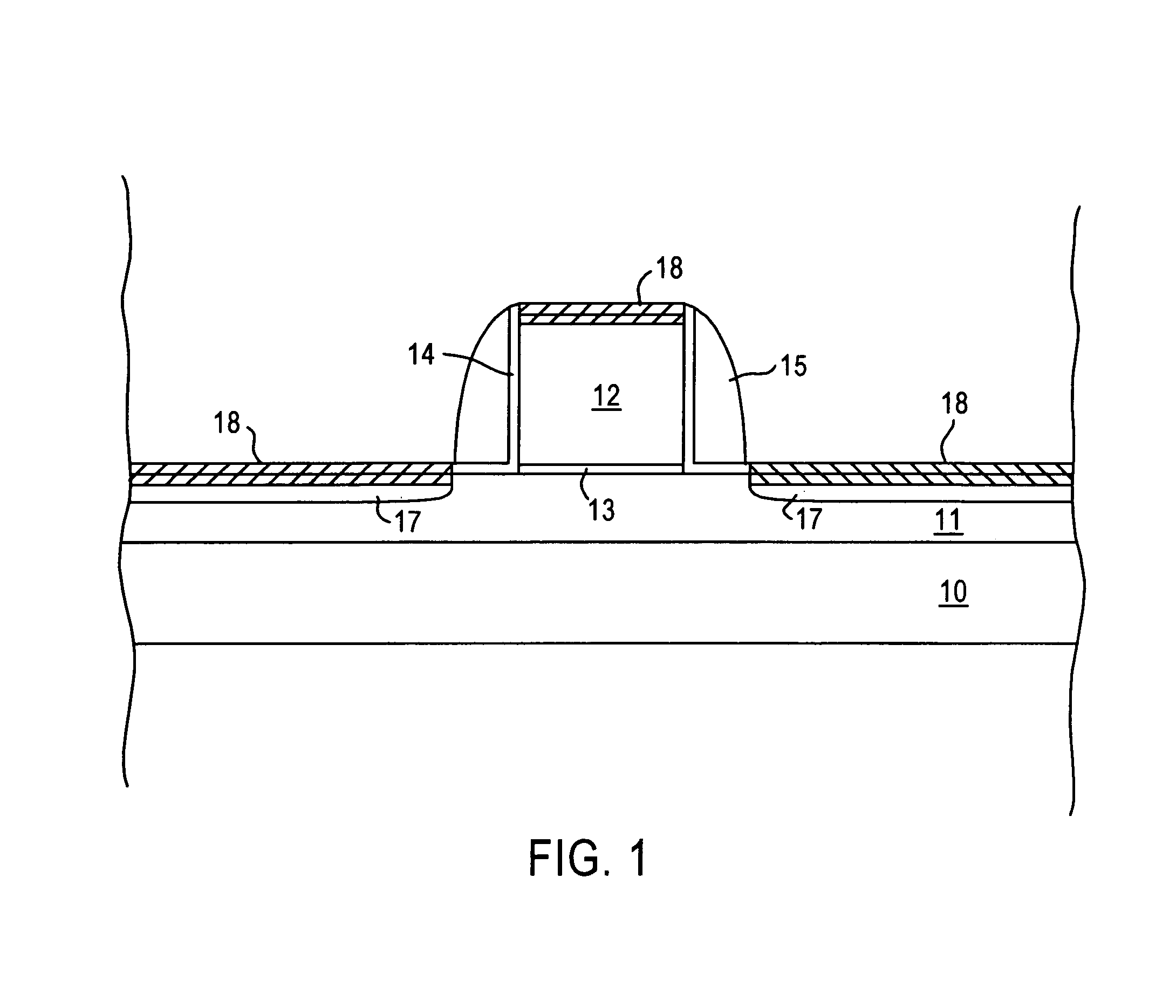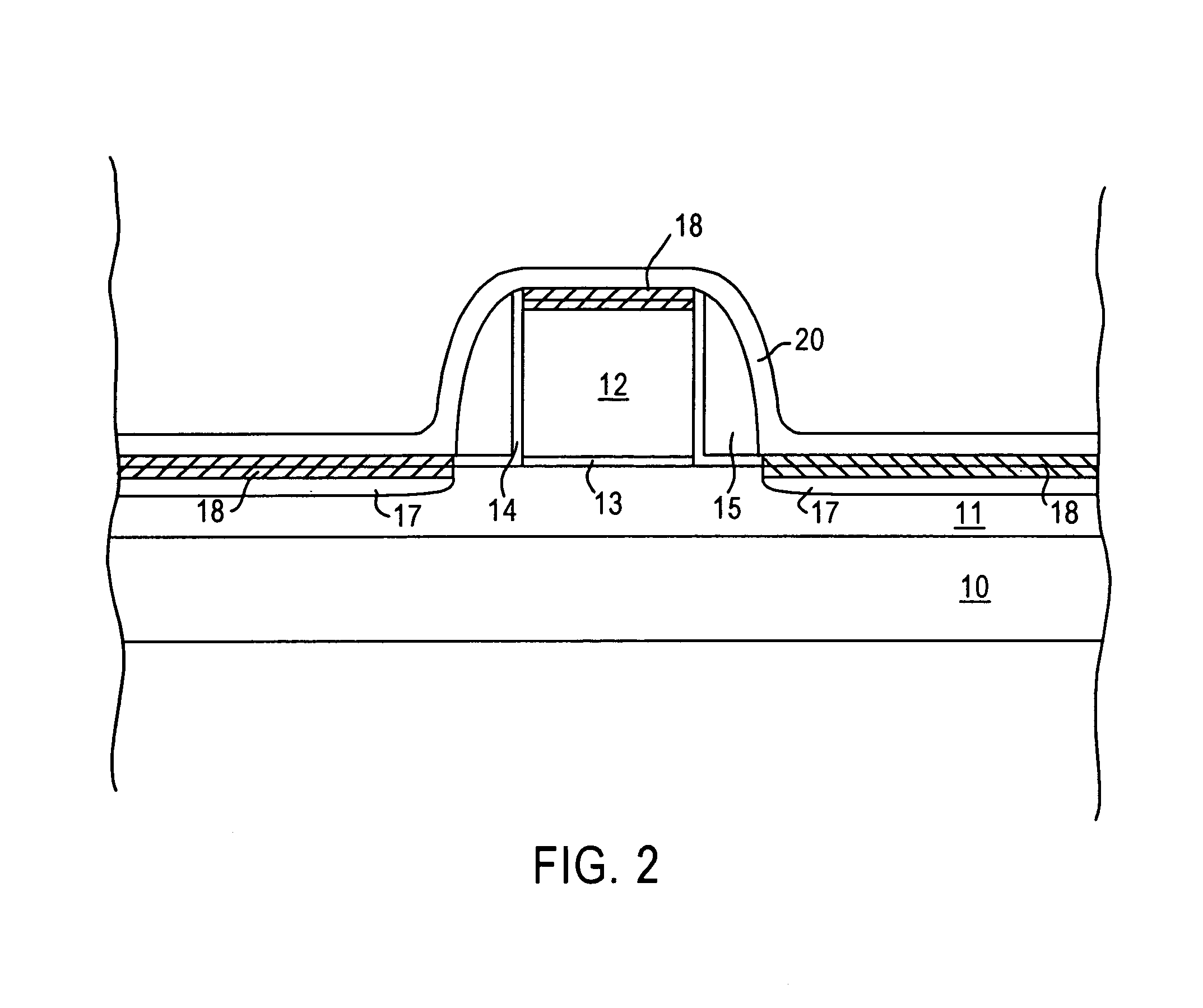In-situ nitride/oxynitride processing with reduced deposition surface pattern sensitivity
a technology of oxide deposition layer, which is applied in the direction of semiconductor devices, semiconductor/solid-state device details, electrical apparatus, etc., can solve the problems of exacerbated instability and undesirable thickness dependence of deposited dielectric layer upon, and achieve enhanced drive current, reduced oxide deposition surface pattern sensitivity, and enhanced drive current
- Summary
- Abstract
- Description
- Claims
- Application Information
AI Technical Summary
Benefits of technology
Problems solved by technology
Method used
Image
Examples
Embodiment Construction
[0019]The present invention addresses and solves the problem of increasing the drive current of transistors, including transistors based on strained Si / Si—Ge substrates, in a cost effective and efficient manner by significantly enhancing channel carrier mobility. The present invention also addresses and solves the loading problem wherein the thickness of a deposited dielectric layer depends upon differences between topographical features, as between closely spaced gate electrodes and isolated electrodes. The present invention stems in part, from the recognition that the channel carrier mobility of transistors, particularly transistors based on strained Si / Si—Ge substrates, can be increased by applying a stress thereto. The present invention also stems, in part, from the recognition that the surface pattern sensitivity of a dielectric layer during deposition, as when depositing silicon oxide layer by SACVD, can be eliminated or significantly reduced by forming a transition layer of s...
PUM
 Login to View More
Login to View More Abstract
Description
Claims
Application Information
 Login to View More
Login to View More - R&D
- Intellectual Property
- Life Sciences
- Materials
- Tech Scout
- Unparalleled Data Quality
- Higher Quality Content
- 60% Fewer Hallucinations
Browse by: Latest US Patents, China's latest patents, Technical Efficacy Thesaurus, Application Domain, Technology Topic, Popular Technical Reports.
© 2025 PatSnap. All rights reserved.Legal|Privacy policy|Modern Slavery Act Transparency Statement|Sitemap|About US| Contact US: help@patsnap.com



